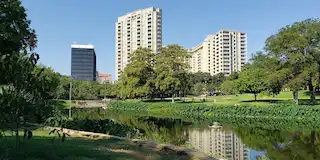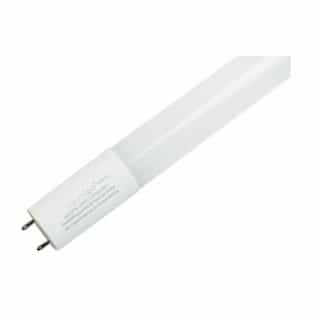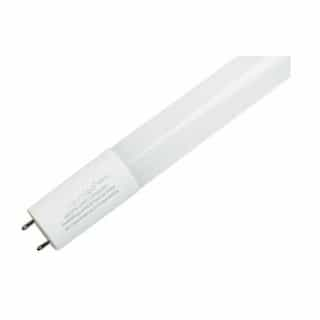LEED Certification: LEED Platinum and the LEED Gold Standard
There are many ways to improve the energy efficiency of a building. LEED Certification is a great program to ensure the quality and energy-efficiency of your construction project. Now that you know all there is to know about LEED certification, here are some tips to help you score high on your next project!
What are Regional Priority Credits?
Regional credits were designed by LEED to give incentives for projects that address geographically specific environmental priorities, based on zip codes. Consider it like a bonus point for constructing in an area that has specific environmental needs.
| Regional Priority | 4 | ||
| Credit | Regional Priority: Specific Credit | 1 | |
| Credit | Regional Priority: Specific Credit | 1 | |
| Credit | Regional Priority: Specific Credit | 1 | |
| Credit | Regional Priority: Specific Credit | 1 | |
Did you know that...
Having a LEED AP on the project is worth 1 point! Learn how you can become LEED accredited!
What are “Prereq” Credits?
These credits are required before any more points in the category are allotted. For example: In order to receive the maximum points allowed in the Indoor Environmental Quality category, the building must pass the minimum indoor air quality performance test.
The building must also include an environmental tobacco smoke control system. The maximum number of points a building can receive in this category is 16 points. All of these points are allotted only when the building has scored high in each additional credit below:
| Indoor Environmental Quality | 16 | ||
| Prereq | Minimum Indoor Air Quality Performance | Required | |
| Prereq | Environmental Tobacco Smoke Control | Required | |
| Credit | Enhanced Indoor Air Quality Strategies | 2 | |
| Credit | Low-Emitting Materials | 3 | |
| Credit | Construction Indoor Air Quality Managment Plan | 1 | |
| Credit | Indoor Air Quality Assessment | 2 | |
| Credit | Thermal Comfort | 1 | |
| Credit | Interior Lighting | 2 | |
| Credit | Daylight | 3 | |
| Credit | Quality Views | 1 | |
| Credit | Acoustic Performance | 1 | |
How can I score high in the Water Efficiency category?
For a building to score high in the water efficiency category, it must have indoor and outdoor water reduction plans in place. The same building must also have a water metering system in place. The total number of points a building can receive in this category is 11 points, considering if they score high in each additional credit below:
| Water Efficiency | 11 | ||
| Prereq | Outdoor Water Use Reduction | Required | |
| Prereq | Indoor Water Use Reduction | Required | |
| Prereq | Building-Level Water Metering | Required | |
| Credit | Outdoor Water Use Reduction | 2 | |
| Credit | Indoor Water Use Reduction | 6 | |
| Credit | Cooling Water Tower Use | 2 | |
| Credit | Water Metering | 1 | |
How can I score high in the Innovation of Design category?
| Innovation | 6 | ||
| Credit | Innovation | 5 | |
| Credit | LEED Accredited Professional | 1 | |
How can I score high in the Energy & Atmosphere category?
Because energy-efficiency is the most important, LEED offers the highest number points in this category. However, before a building can get the maximum 33 points allotted in this category, they must pass four prerequisites:
- Fundamental Commissioning and Verification
- Minimum Energy Performance
- Building-Level Energy Metering
- Fundamental Refrigerant Management
Afterwards, it is eligible to receive additional points from the credits below:
| Energy & Atmosphere | 33 | ||
| Prereq | Fundamental Comissioning and Verification | Required | |
| Prereq | Minimum Energy Performance | Required | |
| Prereq | Building-Level Energy Metering | Required | |
| Prereq | Fundamental Refrigerant Management | Required | |
| Credit | Enhanced Commissioning | 6 | |
| Credit | Optimize Energy Performance | 18 | |
| Credit | Advanced Energy Metering | 1 | |
| Credit | Demand Response | 2 | |
| Credit | Renewable Energy Production | 3 | |
| Credit | Enhanced Refrigerant Management | 1 | |
| Credit | Green Power and Carbon Offsets | 2 | |
How can I score high in the Materials & Resources category?
Before a building project can receive maximum points in this category, it must maintain responsible waste management and sustainable materials & resources. LEED offers a total of 13 points in this category, but first the building must pass two prerequisites:
- Storage and Collection of Recyclables
- Construction And Demolition Waste Management Planning
| Materials & Resources | 13 | ||
| Prereq | Storage and Collection of Recyclables | Required | |
| Prereq | Construction and Demolition Waste Management Planning | Required | |
| Credit | Building Life-Cycle Impact Reduction | 5 | |
| Credit | Building Product Disclosure and Optimization - Enivromental Product Declarations | 2 | |
| Credit | Building Product Disclosure and Optimization - Sourcing of Raw Materials | 2 | |
| Credit | Building Product Disclosure and Optimization - Material Ingredients | 2 | |
| Credit | Construction and Demolition Waste Management | 2 | |
How can I score high in the Sustainable Sites category?
This category offers a total of 10 points, considering the building site scores high in each and every credit category. LEED awards points to buildings that manage their construction activity and prevent pollution.
| Sustainable Sites | 10 | ||
| Prereq | Construction Activity Pollution Prevention | Required | |
| Credit | Site Assessment | 1 | |
| Credit | Site Development - Protect or Restore Habitat | 2 | |
| Credit | Open Space | 1 | |
| Credit | Rainwater Management | 3 | |
| Credit | Heat Island Reduction | 2 | |
| Credit | Light Pollution Reduction | 1 | |
How can I score high in the Location & Transportation category?
LEED awards a maximum of 16 points in this credit category. In order to get the total number of points allotted and receive LEED platinum certification, a building must consider the location, and ensure it has access to eco-friendly transportation options.
| Location & Transportation | 16 | ||
| Credit | LEED for Neighborhood Development Location | 16 | |
| Credit | Sensitive Land Protection | 1 | |
| Credit | High Priority Site | 2 | |
| Credit | Surrounding Density and Diverse Uses | 5 | |
| Credit | Access to Quality Transit | 5 | |
| Credit | Bicycle Facilities | 1 | |
| Credit | Reduced Parking Footprint | 1 | |
| Credit | Green Vehicles | 1 | |
Recommended Reading
LEED stands for Leadership in Energy and Environmental Design. LEED rates green buildings and ensures they maintain sustainable practices.
To become a LEED certified building, you must complete four steps: register, apply, review, and certify! After the review gets accepted, the GBCI can certify your building project with one of four certification levels.
LEED certification demonstrates steps taken to ensure a building’s durability, energy-efficiency, and its impact on the environment. Becoming LEED certified provides assurance that your building’s design and operation exist at the highest environmental standards.
Recommended Products
Receive special deals and more, right to your inbox





